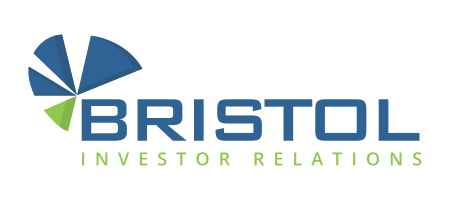How to compile a brilliant investor presentation
How to compile a brilliant investor presentation
Management knows the all-important investor Power Point presentation is a critical component of the company’s financial communications with the investor community and at the heart of IR messaging. Easy to say but not always so easy to successfully compile such a document. As a sales and marketing document, it has to have certain elements that appeal to a broad set of investors to attract their attention. The investor presentation allows investors and potential investors the ability to see the business as a whole and get further insight into strategy, financial and operational performance. It is most certainly one of the most valuable communication tools to the outside audience. In fact, according to a Corbin Perception survey, 88% indicate that the investor presentation has served as an investment catalyst. Understanding what the financial community is looking for and incorporating that into the investor deck will enable a company to differentiate itself against peers and drive long term value.

Understanding what motivates investors and potential investors makes it easier to craft your offering around this. Try to see the presentation through their lense – what story do the numbers tell, what is the growth trajectory, how is the company different and where does the value lie? Defining the company’s story and crafting a compelling investment story is where it starts. Highlight and set the space of the industry, past and current performance, management, differentiators, revenue model and high level financial performance, as these are all important factors. No two businesses are the same and therefore varying degrees of detail should be given appropriate to the business or industry. No one size fits all and a format and template should be used that works for your business and its story.
Concise, easy-to-read bullet points are always better than small copy in convoluted language. Graphics, video and appropriate icons all add visual interest and make it more appealing for the eye to read and stay engaged. We all know the culinary saying “we eat with our eyes and then our stomachs” and the same can be said for making a first impression visually with your Power Point deck. Do this to create the best possible chance to set yours apart from the hundreds that might pass through an investor or banker’s hands.
Sometimes sections might be technical in nature and the reader might benefit from announcement slides that break sections up. It’s all about organizing content in a logical manner and having a flow for the reader to give them the best chance at grasping concepts and information quickly. The length of presentation isn’t as important as its ‘content and flow, which should allow messages to be clearly and effectively conveyed,’ says Jean Zhuang, a director at Tulchan Communications’ Singapore branch. ‘Keep slides succinct and avoid wordiness to ensure messages are not diluted.’ Additional information such as non-vital or supporting facts can be placed in appendices.
Often forgotten are strong introduction and summary slides which set the tone and summarize the preceding slides. These are important to set the stage for the reader and keep them interested to read further or else to want more information on the company and put them on their radar. Often companies shy away from mentioning competitors – don’t! No business is unique and it adds to the overall discussion to mention competitors, how they are different and to give comparables to show where your company stands in relation to its peers. Also crucial to remember is to explain technical concepts and products/ product lines and how these might fit into a consumer’s life. Technical jargon should be put into simple and easy to understand language. According to a 2016 Corbin Perception poll the most important aspects of a best in class presentation that set the tone include long term strategy, objectives and initatives to achieve these goals, capital allocation plans and long term targets including financial objectives.
Here’s a look at some other stats. It’s interesting to note that when an investor presentation is updated with new information, 81% of people say they would be keen to receive an update via email. Furthermore, 53% say the outreach prompts them to visit the corporate website to view the investor deck immediately or soon after and to check other information. Regarding the length that an investor presentation is kept on the corporate website, the longer the better, as long as it is valid and current. 38% feel presentations should remain on the website forever, while 30% think a five-year limit is acceptable. Regarding guidance, nearly half those surveyed or 47% prefer quarterly and annual guidance, while 27% think that it is appropriate for public companies to do so. Breaking this down further shows that guidance metrics such as revenues, organic growth and EBITDA forecasts are of particular interest.
So when compiling your own investor presentation or reviewing one of a peer company it might be of value to remember some of these points mentioned here. As previously said there is no one-size-fits-all template. However, there are definite dos and don’ts you would be wise to consider before hitting the send button!
Sources:
Corbin Perception – Investor Presentation Study
IR Magazine
